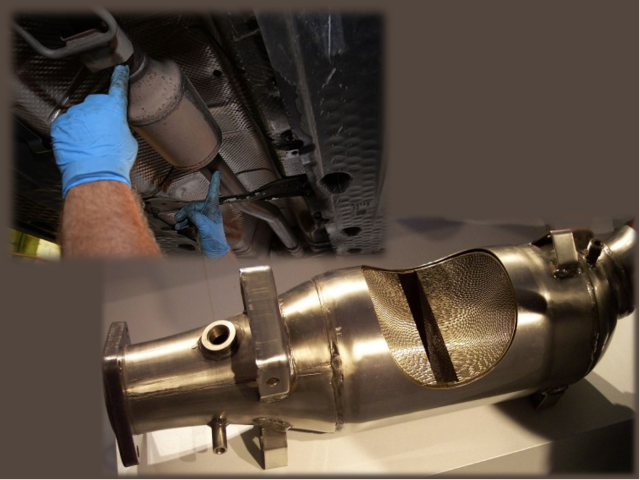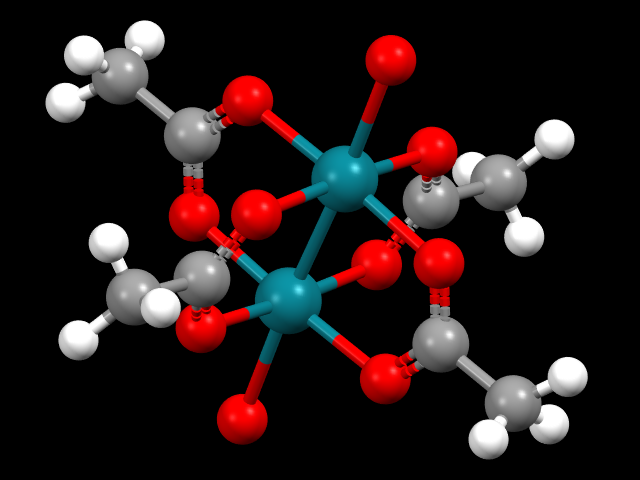Rhodium
Rhodium:

A major use of Rhodium is in automotive catalytic converter to decompose toxic exhaust gases into N2 and O2.
Facts about Rhodium:
- Rhodium: Rhodium is a member of the platinum group metals, having a silvery-white, shiny appearance at standard temperature and pressure (STP)
- Fun fact about Rhodium: Rhodium is the most valuable precious metal in 2019. The Greek word “rhodon”, meaning rose, is the origin of rhodium, due to the rose colour of Rh-containing minerals such as rhodite and rhodplumsite.
- Chemical symbol: Rh
- Atomic number: 45
A crystal structure containing Rhodium:

A paddlewheel-like dinuclear Rh2(OAc)4 complex with water molecules coordinated at the axial positions
Facts about this structure:
- Formula: C8 H16 O10 Rh2
- Structure name: tetrakis(μ2-Acetato-O,O’)-diaqua-di-rhodium(ii)
- Fun fact about the structure: This structure revealed a pair of octahedral Rh atoms linked by a Rh-Rh bond. The axial H2O ligands can be replaced by other nucleophilic reagents to form different adducts with special properties.
- CSD refcode: ACAQRH10 (What’s this?)
- Associated publication: F. A. Cotton, B. G. DeBoer, M. D. LaPrade, J. R. Pipal, D. A. Ucko, Acta Crystallogr., Sect.B:Struct. Crystallogr. Cryst. Chem., 1971, 27, 1664, DOI: 10.1107/S0567740871004527
More about Rhodium:
Rhodium is a chemically inert transition metal. It is one of the rarest metal in the Platinum Group Metals, with a natural occurrence about 0.001 part per million in the earth’s crust. As the major application of this precious metal, rhodium-containing catalytic converters help to remove toxic NOx gases from automobile exhausts to protect our environment and health. Rhodium compounds, such as dirhodium tetraacetate, have been used for selective C-H activation catalysis, which promote the syntheses of many natural products and drug molecules. Dirhodium complexes also have received considerable attention as non-platinum anti-tumor agents with limited side effects.
Learn More About the International Year of the Periodic Table (IYPT) in Crystals Project:
This project (#IYPTCrystals) is part of the International Year of the Periodic Table celebration (#IYPT2019), read more about the project here.
You can follow us on social media; search for #IYPTCrystals or follow The CCDC on X @ccdc_cambridge on Facebook ccdc.cambridge, on Instagram ccdc_cambridge or on YouTube CCDCCambridge.
Understand some of the terms and concepts used with our Frequently Asked Questions page here.
A 3D visualization showing Rhodium in real crystal structures: